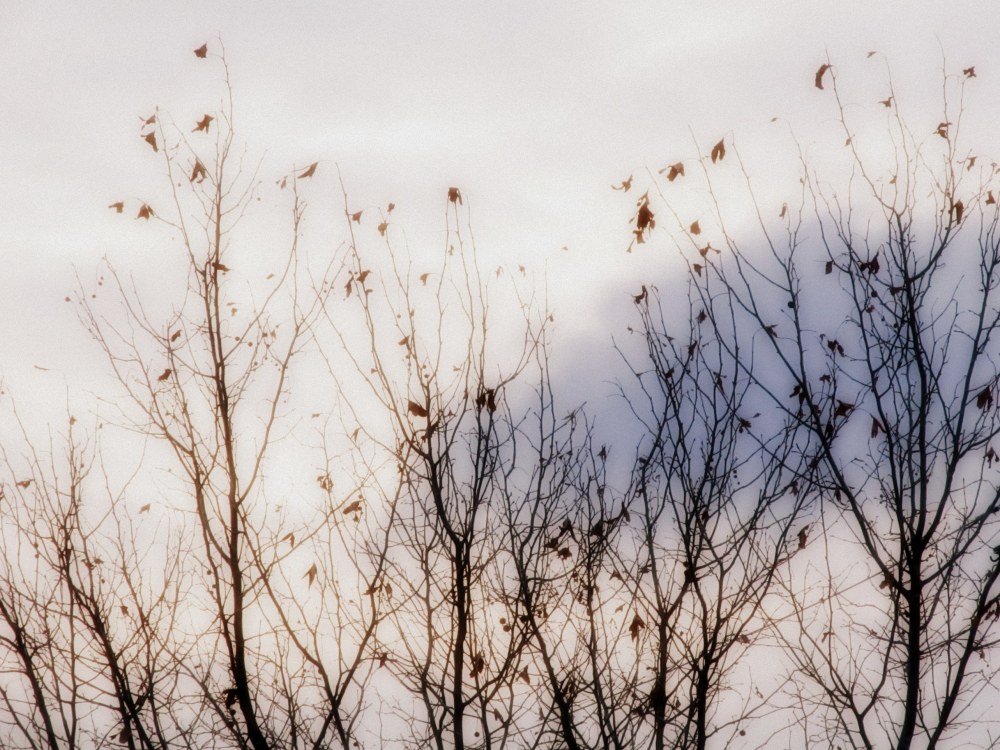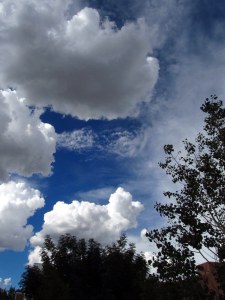 The last thing I’d expected to hear was a baseball game. The day had started with snow — a Scrooge of a storm, all hard knocks and bitterness, dry even for New Mexico. The wind hounded it off and then howled at its back for hours. Leaden clouds stripped the life from the browns and…other browns of the desert. It was a raw, bleak February afternoon, weeks from opening day.
The last thing I’d expected to hear was a baseball game. The day had started with snow — a Scrooge of a storm, all hard knocks and bitterness, dry even for New Mexico. The wind hounded it off and then howled at its back for hours. Leaden clouds stripped the life from the browns and…other browns of the desert. It was a raw, bleak February afternoon, weeks from opening day.
But when I flipped on the car radio, there it was:
“The ball just caught the inside corner of the plate. Two balls and one strike the count.”
The UNM Lobos, playing some poor young men from Fresno who were swearing never to leave California again.
“41 degrees at game time, with a wind chill of 19. A swing and a miss, and it’s two and two.”
I don’t know the first thing about the Lobos. Two thirds of an inning passed before I even figured out which team was at bat. The announcer did the barest of bare-bones jobs. But oh, that call.
“There’s a fastball up and in. Three balls and two strikes.”
It’s the heart of the game, the pulse underlying 162 regular-season games a year. Add the pre- and post-seasons, and six months of the calendar are measured in balls and strikes, the way they have been for over a century. It’s the sound of summer, no matter the actual weather, and on that raw February day two seconds were enough to transport me to a world of delicious, slowly unfolding tension. I wasn’t on Saturday errand time any more but on Ritual Standard Time.
* * * * *
Slowly unfolding tension. Yes. It’s monsoon season — the height of the year in a dry country. To watch the thunderheads building every afternoon and the sky turning black, to wonder whether the “scattered showers and thundershowers” will include you in their path, whether the heat will break in a downpour… Suspense is a slow burn in the desert until the rain begins to fall.
I love this time of year. Mornings I take my tea out to the patio and watch the sky turn from steel to robin’s-egg to azure. After work I’ll sit there with something cold while the clouds build, enjoying the shade and the crossword. Toward dusk I’ll take the ballgame outside and watch the sky darken again. The first stars come out to the call of balls and strikes.
So many mornings. So many evenings. Summer is a long season of rituals for the senses. The basking, the cold drinks, the fragrance of basil and mint, the grapes and peaches and juicy melons, the crickets and cicadas. The windows tuned to catch every breeze as the hot desert day fades to a cool desert night. And the wait for rain.
This is why we endure the heat: because it brings the blessed, life-giving rain. The monsoon has been generous this year. But oh, how the tension draws out before the rain begins to fall.
So many mornings. So many evenings.
Baseball announcers are experts at parallel conversations. The play-by-play proceeds on one track and the color on another, without either feeling like an interruption. They are like meter and rhythm in music: the balls and strikes shaping strong patterns beneath the stories that create character and variety above. Vin Scully can describe an earthquake happening live in Dodger Stadium and then spin off to the ’89 quake at Candlestick Park, all while the count continues. (“There’s a ball in the dirt.”)
Sometimes the tracks stay resolutely apart, and stories and stats float above a sleepy count. But sometimes they converge over a good play — a diving catch, a sweet stolen base, a towering home run. The moment is brief. It may cast a glow for a while, but not for long. The next batter steps up to the plate, and count and color start over again. (“That was almost a good bunt. It’s oh-and-one.”)
Count and color. Baseball is like life, you know, and the patterns of count and color, meter and rhythm, are the same patterns that fill our days. The rituals of mealtimes, of morning coffee, are like balls and strikes — the structure beneath the adventures that give our lives character and variety. My own life, forced into patterns of rest, is heavy on count and light on color. Between the gentle job and needs of daily life, I enjoy few breaks in routine. But even the healthy have to eat every day. We are all forced by our bodies into a certain amount of routine.
When does a routine become a ritual? When you come to love it and feel lost without it? When you make it beautiful? When it leads you to some deeper experience?
And when does ritual lose its meaning again? How often can you repeat it before it becomes mindless habit? How often before you stultify?
* * * * *
 I love my patio, but it gets claustrophobic sometimes. Between close walls, the only openness is skyward. After a weekend resting at home I feel cloistered. How did nuns do it — the Medieval ones sent off to live within stone walls? How did they cope with enclosure and sameness? With the eight hours a day of prayer and singing, the regimented duties, the privations?
I love my patio, but it gets claustrophobic sometimes. Between close walls, the only openness is skyward. After a weekend resting at home I feel cloistered. How did nuns do it — the Medieval ones sent off to live within stone walls? How did they cope with enclosure and sameness? With the eight hours a day of prayer and singing, the regimented duties, the privations?
The only variety came from the passage of seasons, the food on the table. And from the liturgy itself — the grand sweep of the church year from Advent through Christmas and Epiphany, Lent, Easter and Pentecost, and then into the long, summer months of Ordinary Time.
Did they cling to resentment like a last bastion of their old selves? Did they live with their minds elsewhere, in the only escape they could find? Did they learn to take comfort in the rituals? I have done all three. The last is the most satisfying, but it must be relearned every day.
A ritual doesn’t become a ritual without repetition. How you deal with repetition determines whether ritual matters, or whether it bores you silly.
I wonder how baseball announcers do it, cooped up in a press box three hours a day, 162 days a year. I think of the stories about the triceratops skull found beneath Coors Field, the D-Day invasions, and Motorboat Jones’s nickname (“How’s ol’ Motorboat doing these days?” wondered the announcer, and then we all found out)*; the lines of Longfellow and Donne scattered ironically between pitches; the endless litanies of statistics. Apparently, they struggle, too.
We are programmed for activity, for synapses to form, for neurons to spark. We are not programmed for stasis. Forced leisure has a certain ambivalence in comfortable circumstances. It is not a bad thing, exactly, to be stuck in safety in a cushioned garden chair looking at clouds. Hour after hour. It is not bad to be cloistered. This is not a prison of violence or poverty. But illness is a prison nonetheless. You are limited in action and movement; you are forced against your will into sameness, into the bare bones of work-to-live and necessities. You are aware that even bare bones are a luxury.
In restricted circumstances it’s hard to find the color. It’s a struggle to give fresh meaning to repetition, to see leaf and blossom in the rituals that root our days. The color matters — the evenings out, the movies and concerts and gatherings with friends. Without it life is endless balls and strikes and no home runs. It’s Narnia under the curse: always winter and never Christmas.
One can bring color into the count. Announcers might gussy up their language. (“That ball had more English on it than the Queen.”) Medieval nuns might have embroidered altar cloths, and burnished paten and chalice to glow in the candlelight as they chanted. I bring my favorite mug onto the patio, run fingers through a patch of chamomile, settle in to watch the hummingbirds. The color may be reduced, but the rituals are strong and beautiful.
Still, dissonance grates between the pleasure of individual moments and the restriction that builds up over time. Happiness demands a winnowing of awareness down to an ever-smaller present.
So many mornings. So many evenings.
_________________
*He’s fine.
* * * * *
 The bell at San Felipe de Neri Church is ringing. You shouldn’t set your clock by it (trust me), but it’s a pleasant companion on the patio. Tonight as it calls the faithful to Mass, it calls me in to dinner. I’m making a favorite: a simple pasta salad with handfuls of fresh herbs, some tomatoes and scallions, a salting of feta, a drizzle of olive oil. In the background, the Dodgers are playing the Rockies.
The bell at San Felipe de Neri Church is ringing. You shouldn’t set your clock by it (trust me), but it’s a pleasant companion on the patio. Tonight as it calls the faithful to Mass, it calls me in to dinner. I’m making a favorite: a simple pasta salad with handfuls of fresh herbs, some tomatoes and scallions, a salting of feta, a drizzle of olive oil. In the background, the Dodgers are playing the Rockies.
Calling baseball “the sound of summer” isn’t quite right. It’s more the sound of summer’s waxing and waning. It has April’s promise of excitement; the slow warm-up of May; the long slog of midseason heat; the quickening pace in August and September; and the final blaze of October before evenings turn long and quiet. The ball-and-strike count has a different tone on Opening Day than during the championships; a different intensity before the All-Star break and after it.
Ritual means something different in context. The small changes in its rhythms articulate the long, slow changes of cycles and seasons. They connect the day to the year; they position it in context to give it its own flavor. They link to long histories — the 130 years of baseball, the centuries-long flow of liturgy.
Rituals articulate time. When you observe them, you don’t look up startled one day and wonder, “Where did the summer go?” You’ve lived the progress of the season; you’ve engaged in its slow unfolding. You’ve tasted its subtle flavors.
My attention has wandered from the game (baseball can be like that), but it dawns on me that the pace has slowed. I listen and understand why. Troy Tulowitzki is at the plate. He is the slowest batter in baseball — and among the best. He does a long routine between pitches, and the announcers have plenty of time to describe it: he tightens his batting gloves, takes a good look at his bat, digs in, adjusts his helmet, taps the bat twice on home plate.
This at-bat is a wily one. Tulo fouls off pitch after pitch. In between he re-does the gloves, the bat, the digging in, the helmet, the tapping. Every. Single. Time. The announcers are half irritated, half amused.
Then we hear it. The crack of the bat. The voices sharpen, the pace quickens.
“There’s a high fly ball into right center field. Pederson is on his horse, he’s racing back, at the warning track looking up, and she is GONE! Troy Tulowitzki! A three-run home run!”
The moment when count and color come together in a blaze of glory.
Without the occasional hit, Troy Tulowitzki is just another obsessive-compulsive slowpoke. Factor in his batting average, and he’s a pro who uses ritual well — to focus his entire being on the split-second present, on every 90-mile-an-hour fastball thrown his way.
As I scoop the herbs off the cutting board the fragrance of dill fills the kitchen. My senses come alive: to the summer breeze through the window over the sink, the rhythmic motion of knife on board, the aromas of onion and herb, the bright splash of tomato on heirloom dishes, the sound of the game running through it. How many meals have begun this way? How many eons of meals have begun this way? I am standing in a grand continuity of dinners and cooks. Everything savors of ritual: the plate and cup, the running water and washing of hands. It’s a feast of senses and mind, memory, enjoyment, and kinship.
This moment is reduced to bare bones; it is all essence. Food and drink, safety, connectedness. Beauty. It’s a home run. It’s Christmas Day. At least until tomorrow, when we’ll start over again. Another at-bat. Another meal. Another ritual.
Thunder growls low. The wind holds out an offering: in a dry land, the sweet, sweet scent of rain.
The penalty for being a slow writer is that facts change before you finish with them. Tulo is no longer a Colorado Rocky, alas. I wish him well in Toronto.


